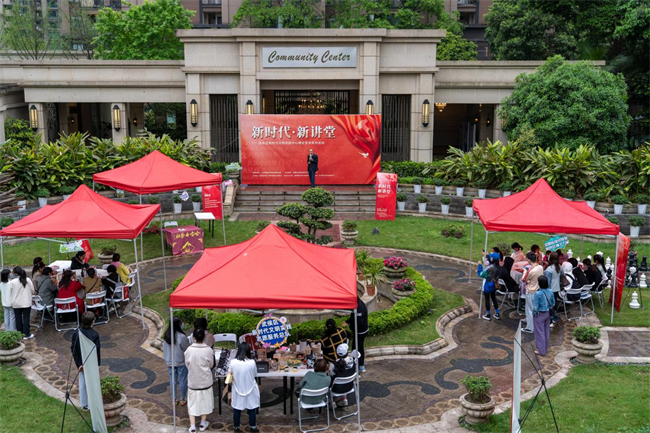Interview: New Discoveries at Sanxingdui Ruins May Open Up Future of Archaeology: Japanese Expert
The new archaeological discoveries at the Sanxingdui Ruins site in southwestern China's Sichuan province may open up the future of archaeology in China and even the world, a Japanese expert has said in an interview with Xinhua.
"These new discoveries are the result of the unremitting efforts of archaeological researchers, who have applied epoch-making scientific and technological methods across many fields," said Yoshio Kawamura, a researcher at Kyushu National Museum.
Kawamura's research on Chinese archaeology and bronze wares is closely related to an unearthed cultural relic from Sanxingdui.
On his first trip to China as a college student, he came across the bronze wares unearthed at the Sanxingdui site in the Sichuan Provincial Museum and saw the Bronze Mask With Protruding Eyes for the first time.
He was shocked by the exhibition. "The bronze wares related to Chinese civilization that I had learned in high school history class were all containers, but the bronze culture with such a strange shaped mask that flourished in the Chengdu Basin was far beyond my imagination," he recalled.
"It was this mask that inspired me to study Chinese archaeology, especially bronzes," he told Xinhua.
Kawamura went to work at the Tokyo National Museum later. In 2012, to commemorate the 40th anniversary of the normalization of diplomatic relations between China and Japan, the museum held a special exhibition on the treasures of Chinese dynasties, which exhibited representative cultural relics unearthed from the Xia Dynasty to the Song Dynasty.
Kawamura, who was in charge of the exhibition, was delighted to see the Bronze Mask With Protruding Eyes again after nearly 20 years.
"The bronze wares unearthed from Sanxingdui site was the reason why I decided to engage in the study of Chinese archaeology. It was a great pleasure to meet it again, to participate in the exhibition and to introduce its charm to more Japanese people," he said.
The Japanese expert now works at Kyushu National Museum. Talking of the new discoveries at Sanxingdui site, he said, "Many researchers would have guessed that there would be gold items, but what really caught my attention was the large amount of gold objects."
He believes that the new discoveries will raise two major questions for the archaeology field.
The first is about the diversity of Chinese civilizations The Sanxingdui culture used bronze to make weapons and sacrificial tools, which had something in common with the Xia, Yin and Zhou dynasties, but it is surprising that so many gold objects can be made. Although the Sanxingdui culture also belongs to the Chinese civilization and the bronze civilization, its bronze wares are quite different from that of the Yellow River reaches.
The second is how the Sanxingdui culture ended. The large number of gold objects unearthed should shed new light on the controversy over the nature of No. 1 and No. 2 pits and how the Sanxingdui culture actually died out, said Kawamura. These clues may provide a new interpretation for the unfathomable end of Sanxingdui culture up to now.
"Even from a global perspective, the archaeological project is very advanced and positive, and there is much for Japanese researchers to learn from it," Kawamura added.
Recommend for you
Business
- Luzhou Vocational & Technical College Held the Annual Meeting of Chengdu-Chongqing Twin Cities Economic Circle Smart Retail Alliance
- How Strong Is the Cultural and Creative Atmosphere in Chengdu? Fanmate May Be One of the Answer
- The 24th Chengdu International Automobile Exhibition Will Open Soon
- Nearly 300 Design Teams Signed up for the Chengdu Community Beauty Space Global Concept Scheme Collection
- JOUAV: To Introduce Chinese-Made Drones To the world
- Leaders of Guangyuan City Made An Secret Investigation to Supervise Ecological Environmental Protection
View
- Welcome to Shimian County for A Happy New Year
- Winter of Chengdu: To Date Wintersweet in the Park City
- Colors of Sihchuan
- Sichuan Huaying Slag Field into Ecological Spotty Shot
- Go and Participate in Environmental Protection Activities in the Coming Low-carbon Day
- The 2021 APEC Women's Leadership Forum Will Be Held in Chengdu in September




